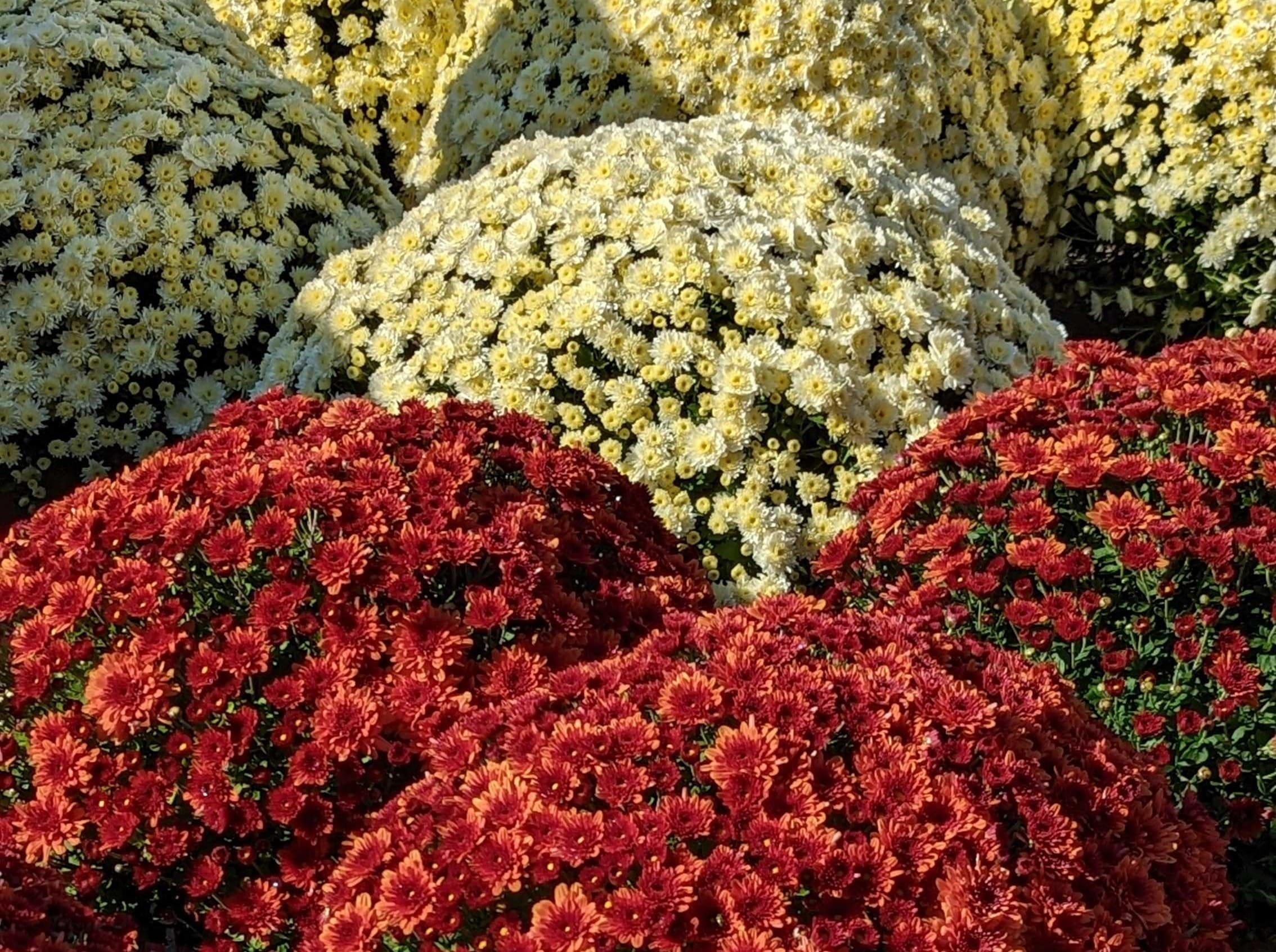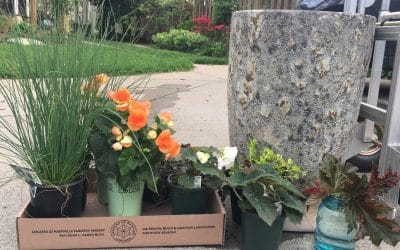You know it’s really fall when you see swaths of brightly colored flowers drifting across a garden center’s tables and shelves. Here’s where you can pick up a pot – or two, or three or more – of mums to take your landscape through the season. But what to do with them once you get them home?
You have options: you can plant them in the ground as temporary accent plants; use them in container gardens with other fall-theme plants and flowers; you can display big, solo mounds of mums in containers.
Most gardeners tend to treat mums as annuals, and toss them on the compost once their time seems to be up. But you can also plant these hardy mums in your landscape where they will return year after year to brighten your garden beds in the fall.

Accent with Mums
Potted chrysanthemums that you purchase in fall do well outdoors when they get enough sunlight and water, and the flowers last until they succumb to a hard frost. You may want to transplant them from their nursery pots into something more decorative with potting mix, but it’s easy enough to set the plastic pot of blooming mums into a decorative container and call it done.
Smaller pots of mums can become great accent plants in a fall-theme container garden, paired with other fall annual and perennial favorites such as ornamental kale and cabbage, heuchera, juniper, sedges, pansies and other plants that don’t wilt in cold weather.
If you plant your just-bought blooming mums in the ground, be sure to cover the soil with plenty of mulch. While the first big frost will turn the flowers brown, the foliage will likely stay green for a while longer, and the mulch will help protect the roots, making it more likely that the plants will sprout from the ground again in the spring, if that’s your goal.

From the Ground Up
Yes, if it’s a mild enough winter and they’re in a suitable location – full sun and well-drained soil — those mums in the ground likely will come back in the spring, and this is when the care and training begin.
In my own garden beds here in Middle Tennessee, tender new foliage begins to appear as early as March, or earlier if the winter has been mild. As spring approaches, cut back the dead stems, and apply a balanced fertilizer.
Mums’ foliage begins to grow steadily when the weather warms up, so for the best display in the fall, take time to pinch back the growing tips two or three times during the spring and summer, even if you notice buds beginning to form. This allows the plants to grow fuller and bushier, and delays blooming until fall, when you really need those flowers to open. Stop pinching them back about mid-July to allow buds to begin to form. Feed mums once again in early August. They will bloom in late summer and throughout the fall. After freeze has turned everything brown, allow the dried stems to remain; this increases the plants’ chances of survival in the ground. A light layer of straw or loose mulch provides additional protection.
A clump of mums tends to get woody as the plants get older so they should be divided every two years, preferably in spring. Dig them up, split the root clumps apart, then replant in your garden beds (and share the leftovers with gardening friends). This assures that your patch of mums remains full and attractive year after year.

Bring Mums inside
Although I find the scent of chrysanthemums to be a little too strong for indoor enjoyment, it is possible to enjoy those blooms inside. Give them a place with bright, indirect light. Check the soil frequently, and water the mums when the top inch of the soil is dry. Cut off the flowers as they begin to droop to encourage the mums to continue to bloom as long as possible.
Visit the Gardens of Babylon Garden Center for a variety of fall-hardy plants and decorative containers for your home and garden.





